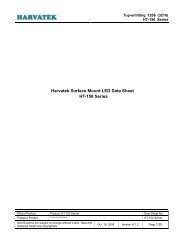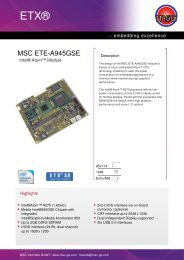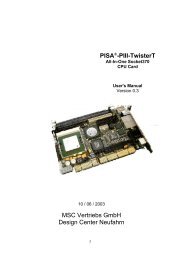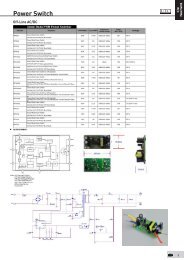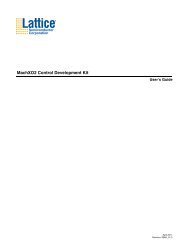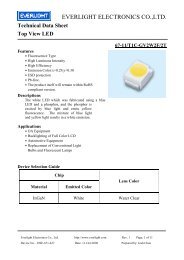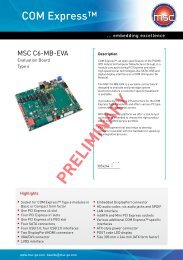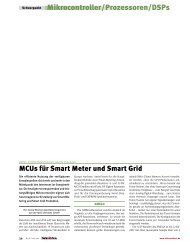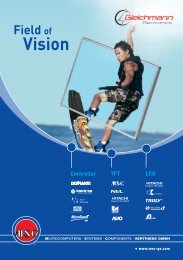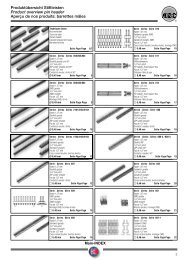ADC 10-bit 2 Gsps Evaluation Board - TSEV83102G0B User Guide
ADC 10-bit 2 Gsps Evaluation Board - TSEV83102G0B User Guide
ADC 10-bit 2 Gsps Evaluation Board - TSEV83102G0B User Guide
You also want an ePaper? Increase the reach of your titles
YUMPU automatically turns print PDFs into web optimized ePapers that Google loves.
Section 4<br />
Application Information<br />
4.1 Introduction For this section, also refer to the product "Main features" (TS83<strong>10</strong>2G0B Datasheet).<br />
More particularly, refer to sections related to single-ended and differential input<br />
configurations.<br />
4.2 Analog Inputs The analog inputs can be entered in differential or single-ended mode without any high<br />
speed performance degradation.<br />
The board digitizes single-ended signals by choosing either input and leaving the other<br />
input open, as the latter is on-board 50Ω terminated. The nominal in-phase inputs are<br />
VIN (See Section 3).<br />
4.3 Clock Inputs The clock inputs can be entered in differential or single-ended mode without any performance<br />
degradation for a clock frequency up to 500 MHz. At higher rates, it is<br />
recommended to drive the clock inputs differentially. Moreover, the typical in phase<br />
clock input amplitude is 1V peak to peak, centered on 0V (Ground), or -1.3V (ECL) on<br />
common mode.<br />
As for the analog input, either clock input can be chosen (if the single-ended output<br />
mode is used), leaving the other input open, as both clock inputs are on-chip 50Ω terminated.<br />
The nominal in-phase clock input is CLK (Section 3).<br />
4.4 Setting the<br />
Digital Output<br />
Data Format<br />
For this section, refer to the <strong>Evaluation</strong> <strong>Board</strong> Electrical schematic and to the components<br />
placement document (respectively Figure 6-2 on page 6-3 and Figure 6-8 on page<br />
6-4).<br />
Refer also to the TS83<strong>10</strong>2G0B specification about digital output coding.<br />
The TS83<strong>10</strong>2G0B delivers data in natural binary code or in Gray code. If the B/GB input<br />
is left floating or tied to GND the data format selected will be natural binary, if this input<br />
is tied to VEE the data will follow the Gray code.<br />
Use the jumper denoted B/GB to select the output data port format:<br />
� If B/GB is left floating or tied to GND, the data output format is true binary.<br />
� If B/GB is tied to V EE or driven with ECL low level, the data outputs are in the Gray<br />
format.<br />
TSEV83<strong>10</strong>2G0B - <strong>Evaluation</strong> <strong>Board</strong> <strong>User</strong> <strong>Guide</strong> 4-1<br />
Rev. 2166D–BDC–01/04



